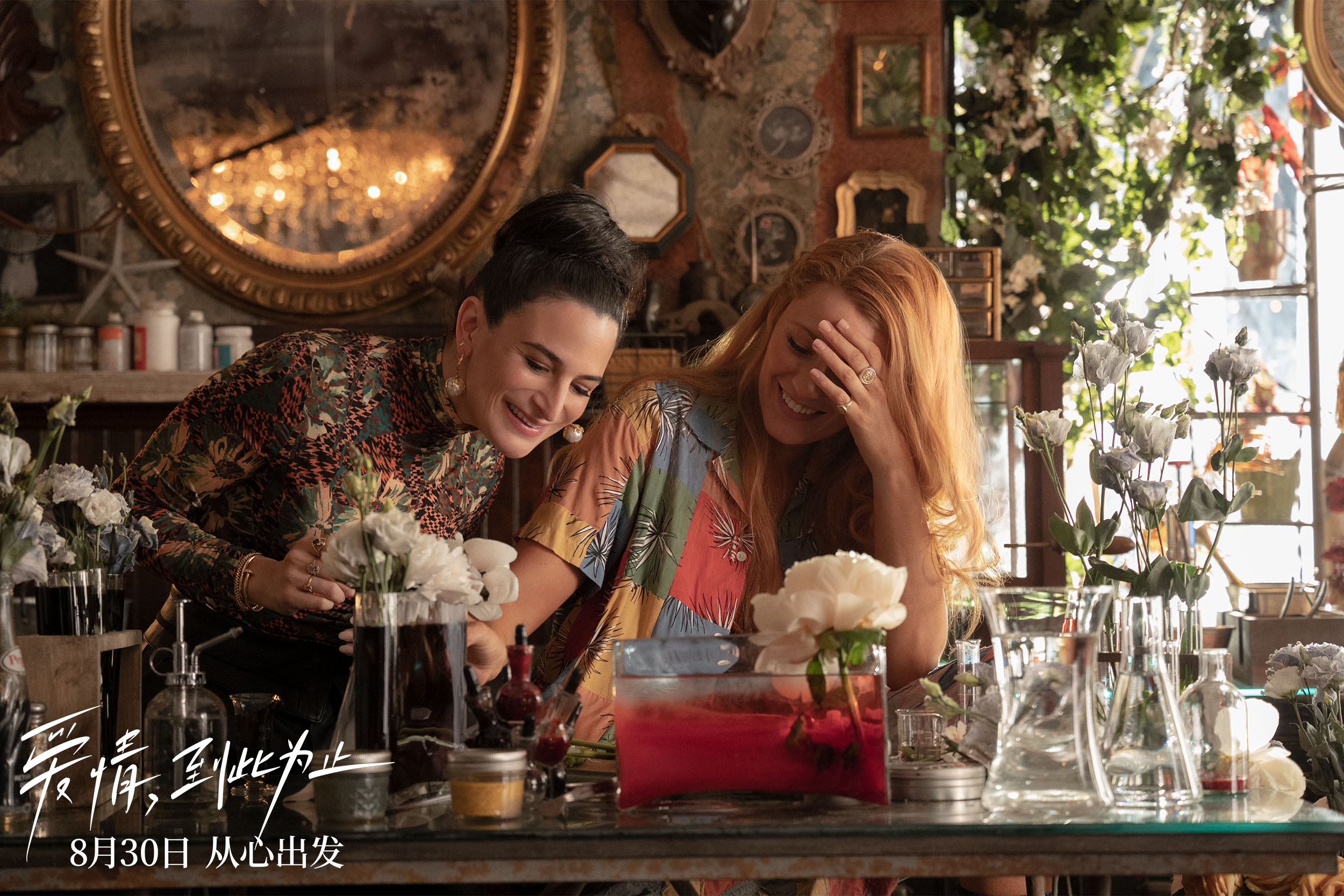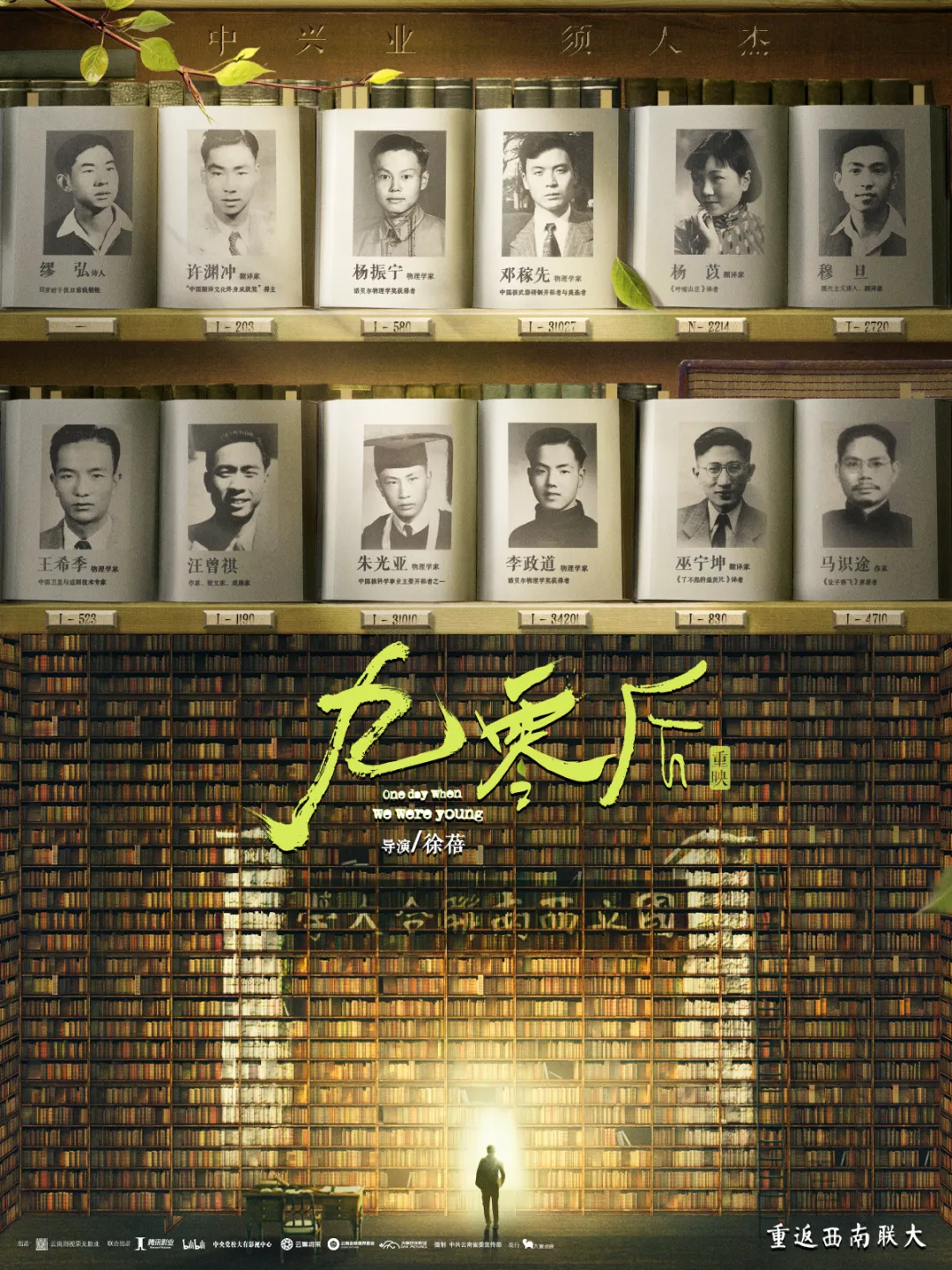
Blake Lively is not your typical beauty; she has strong facial features and noticeable cheek moles, yet she possesses a face that evokes feelings of first love. Her hair is naturally thick, her long, delicate brows pair with her narrow double eyelids, her nose is high and elegant, and her lips are soft and rosy. She embodies a beauty that is neither aggressive nor overtly sensual. When she smiles, it is like a flower blooming in the morning dew—radiant yet tinged with a subtle melancholy and an unyielding sense of self, perfectly representing the emotional nuances and sensitive pride of a girl experiencing the first stirrings of love.

Poster for "It Ends with Us"
Much of her fame stems from "Gossip Girl," but perhaps her true iconic role is in "It Ends with Us," in which she portrays an eternally youthful, romantic, self-respecting woman. After becoming a wife and mother of four, Blake Lively's return to starring in a modern romance proves she remains stunning beyond compare. "It Ends with Us" serves as a recent example of Hollywood's low-budget, high-profit films, and her contributions to this success are undeniable. Lively's authentic and nuanced performance reveals the varying emotional needs and self-awareness of women at different stages within an intimate relationship, which is precisely the carefully crafted narrative strategy the film employs, especially at a time when traditional romantic films are losing their charm.
The film is adapted from Colleen Hoover's phenomenal novel, published in 2016 and selling over four million copies in the U.S. alone, earning it a spot on bestseller lists and being translated into dozens of languages. The promotional materials frame the novel alongside "Fifty Shades of Grey," with the author hailed as the "Queen of North American Romance," suggesting that the overall themes are probably quite familiar. The first half of the film closely follows the original story, presenting a fantastical Mary Sue narrative.
After her father's death, a girl striving away from home meets a handsome and wealthy neurosurgeon. Though he has long avoided meaningful romantic relationships, his uncontrollable love for her eventually prompts him to open his heart, and they marry. Not only does the protagonist fulfill her dream of opening a flower shop, but she also gains the friendship and support of the neurosurgeon's wealthy sister while encountering her first love, who is still unable to forget her.
While this plotline is quite convincing with Blake Lively in the lead role, it must be noted that director and co-star Justin Baldoni excels in handling emotional scenes. The clichéd storyline is surprisingly well-managed, striking a balance that makes it genuinely touching. The chemistry between the lead characters is skillfully captured, with adept shifts in perspective and close-ups, paired with the lively, romantic background music, beautifully illustrating how two previously unknown individuals navigate their initial connection, their subsequent joy, the tentative dance of emotional ups and downs, losses, hopes, and gains—filled with a tension that is both radiant and heartwarming, strikingly vivid like a beautiful dream.

Still from "It Ends with Us"
The novel's success eight years ago reaffirmed that Mary Sue stories transcend geographical and racial boundaries, carrying a universal and profound appeal. As a comforting compensation for the dark realities of life, a Mary Sue embodies humanity's most ancient desires and vanities, while also reflecting the "perfect" romantic and marital expectations shaped by contemporary culture. These narratives encompass various standards—social class, appearance, values—while also highlighting women's self-perceptions, suggesting that only by living a Mary Sue life and achieving class transcendence through true love can one be considered a winner in life. This daydream—practically unattainable in reality—serves as a modern retelling of the "Cinderella" story, embedded within a highly symbolic narrative, continually retold and cherished by many seeking emotional solace and illusionary satisfaction in such stories. However, in recent years, Hollywood has seen a notable decline in output and attention for romantic stories, rom-coms, and chick flicks targeted at young women, as the primary readership for Mary Sue novels has shifted from young women to middle-aged groups. This shift is largely attributed to subtle changes in youth culture.
Globally, more young people are consciously choosing a low-desire lifestyle. Regarding romance, they still harbor desires and aspirations but often opt for a wait-and-see approach. The costs of love—time, energy, money, and emotional investment—seem too high, with benefits often unclear or potentially detrimental to personal development. In classic Hegelian philosophy of love, the idea that the self can be wholly consumed and transformed by genuine love feels too radical and risky for today’s youth. In a society that emphasizes self-motivation and pragmatic considerations, young people are more inclined toward self-growth. Meanwhile, the continuous rise and maturation of feminism in cultural spheres have further isolated Mary Sue stories among younger audiences, sometimes even turning them into objects of irony.

Cover of the novel "It Ends with Us"
Indeed, the enduring appeal of romance in Hollywood genre films lies in the obstacles often set for lovers, spanning age, race, class, physiology, geography, family background, appearance, and even species or life/death. Regardless of whether the outcome is union or separation, the risks and sacrifices made by lovers to overcome these barriers is intrinsically moving. However, to adapt to the current cultural context, classic Mary Sue narratives must undergo adjustment, shifting the source of romantic obstacles from external factors to interpersonal dynamics, putting greater emphasis on personal growth and fulfillment. "It Ends with Us," while fundamentally a Mary Sue story and a second-rate literary work, shines a light on domestic violence, with the protagonist's decisive escape from a suffocating relationship underscoring the awakening and growth of female strength. The film effectively captures this theme while also emphasizing female friendship and notably adopts an ambiguous stance toward domestic violence.

Still from "It Ends with Us"
Once married, the emotional interaction between the lead characters gradually turns to a toxic love. Unlike the more passion-driven toxic relationships in "Fifty Shades of Grey," or the more philosophical emotional abuse in "Wuthering Heights," the lovers in "It Ends with Us" share a deep spiritual and physical attraction, yet the male lead seems unable to control his emotions. Thus, the toxic aspects arise not from social class disparities but manifest as domestic violence. However, this film is a product of the long-established Hollywood Columbia Pictures, rich in entertainment value and commercial goals, rather than an artistic film focused on social critique or complex human nature analysis. Consequently, the three spousal abuse instances in the film are downplayed; each act is either framed as an accident or linked to the female protagonist's former love, causing him to react intensely regarding this relationship. Therefore, the storyline shifts from a Mary Sue narrative to a Freudian analysis.

Still from "It Ends with Us"
The narrative threads introduced by the first love interest become clearer only at this point in the film. In the first half, the initial love experiences continuously intersect with the current romantic relationship, revealing the protagonist's cherished memories and lingering feelings about the past, along with her expectations of the ideal partner, all profoundly influenced by this earlier relationship. The surprising, joyful, and regretful emotions encountered in real life upon unexpected reunions, as well as her emotional oscillation between her ex and current love, intricately depict the psychological landscape of urban women. The film does not stick with the familiar love triangle trope of the domineering boss, the white moonlight love, and the knockout female lead but instead analyzes the dynamics of domestic violence through the lens of the three characters’ familial backgrounds, childhood traumas, intimate relationships, and intergenerational ties. It becomes evident that all three are trapped in the shadows of their pasts. The difference lies in the female lead and her first love, both of whom have witnessed or experienced the harms of domestic violence in their families, providing them a mutual understanding of one another. In contrast, the male protagonist, burdened by a childhood accident, keeps his heart tightly shut, leading to frequent emotional outbursts as he struggles with trust issues and the weight of their relationship, akin to a drowning person clutching for a lifesaver.

Still from "It Ends with Us"
Thus, the English title "It Ends with Us" incorporates dual meanings. On one hand, it signifies the protagonist’s resolve to leave a relationship that brings only negative outcomes, choosing to embrace life as a single mother. The film’s conclusion foreshadows a reunion with her long-waiting first love after years of divorce. Here, the "end" represents the conclusion of the emotional relationship between the male and female leads; on the other hand, it signifies that the trio in the film becomes conscious of the physical and emotional damage that domestic violence inflicts on families and future generations, deciding to put an end to the irrational cycle of violence.

Still from "It Ends with Us"
The notable thematic shifts throughout the film create a sense of internal disunity. While one might argue that the path from love-drunk in the first half to the self-awareness in the latter reflects different facets of women's emotional lives, the carefully crafted domestic violence narrative fails to genuinely address the tragic circumstances faced by victims, resulting in insufficient critical engagement, which has led to various controversies since its release. Fairly judging from the perspective of traditional Hollywood commercial filmmaking, "It Ends with Us" stands as a competent adaptation, capturing the most engaging romantic highlights from the original work while infusing relevant social issues within an overall lighthearted narrative tone. The plot about women confronting their inner desires and fears, ultimately achieving personal growth, possesses a degree of universality. However, as societal contexts evolve, and audiences become more attuned to factual truths and the improvement of social issues, the film's narrative setup seems ripe for further development.


